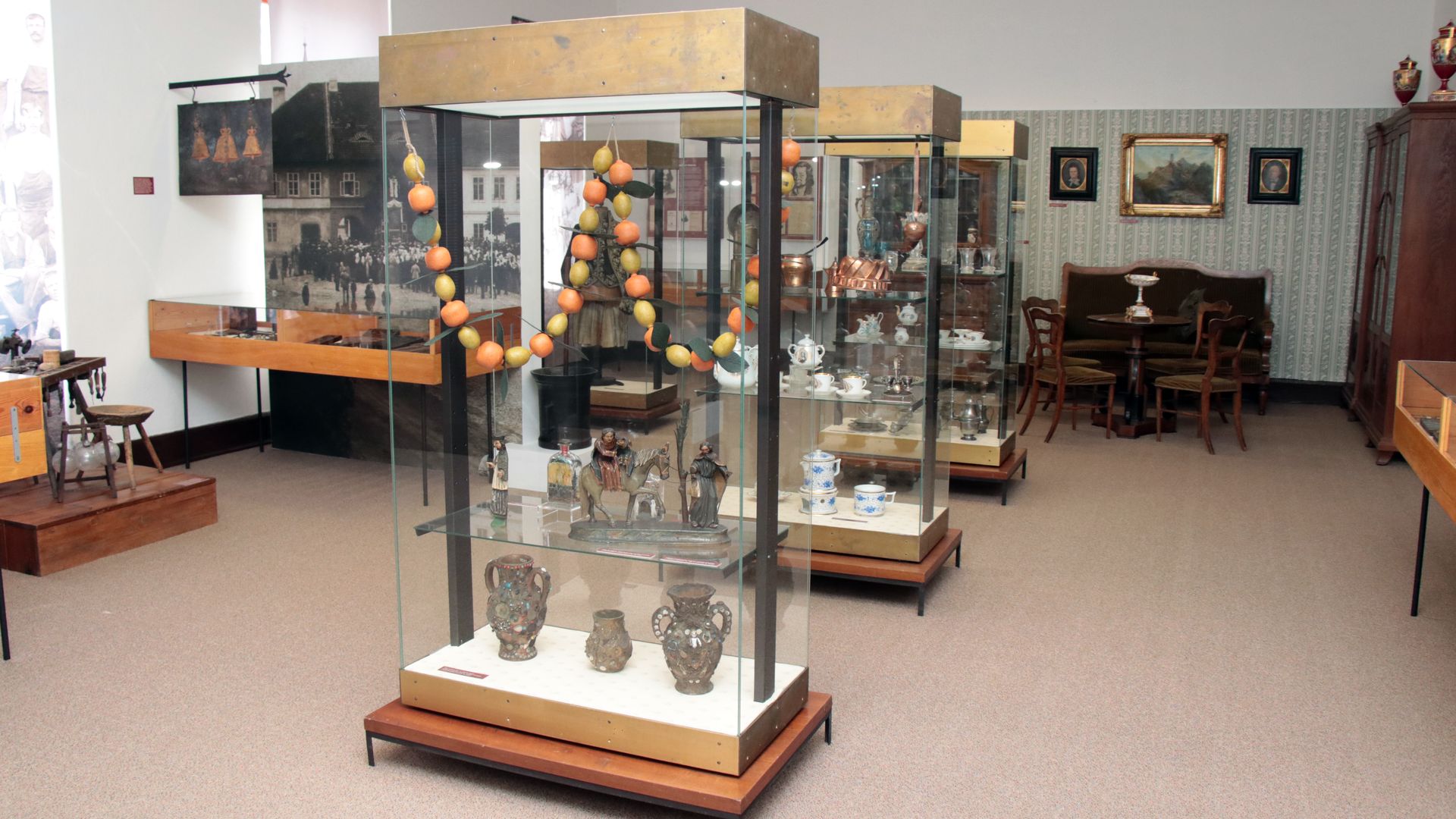
Museum Zebrak
The museum is housed in a former school building on Beggar’s Square. It offers two exhibitions called From the History of the Town of Žebrák and the Jaroslav Hněvkovsky Gallery. The employees of the Museum of the Czech Karst in Beroun in this branch are preparing a new exhibition for each season.
The museum in Žebrák continues a tradition lasting almost centuries. It was founded in 1925, originally housed in the room of a former inn in the town hall. The then natural history department contained rocks and minerals from the surroundings of the town. You can find here also a collection of fossilized plants. At present, the Beggar’s Museum is located together with the town library in the building of the former school.
For many years before whose involvement in the organizational structure of the Museum of the Czech Karst, which took place in 1988, the staff of the Beroun Museum provided him with methodological and professional assistance. The historical exhibition deals with the history of this royal chamber city. The museum exhibits a thematically wide range of exhibits: objects of municipal law; – tapestries through representative and liturgical church textiles; mass robes; objects of everyday life for the burgher; furniture and various types of utensils. Remains of old handicrafts can also be seen.
Bakers and gingerbread makers show wooden, ceramic and copper molds of various shapes along with waffle irons, cobbler’s, tools and stools and chandler’s molds for candles. Also on display are relics of old large-scale industrial production originating from the former local soap and rapeseed oil factory of Čeňek Havlík. Crafts are also represented by objects of guild and trade orders.
You can see guild banners, seals and guild cash registers, and also trade license shields from an earlier period.Part of the exhibition is dedicated to important natives and national awakeners from the generation of Josef Jungmann: the poet Šebestián Hněvkovský; the writer and bohemian of Charles University in Prague Jan Nejedlý; and his brother, the poet Vojtěch Nejedlý. In addition to their clothing, their manuscripts and diaries are on display. The Jaroslav Hněvkovský Gallery, consisting of an exhibition of paintings by the so-called Slavic Paul Gauguin, as the painter Hněvkovský is also known goes far beyond the boundaries of a small town and traditionally conceived museum of ethnography.
The contrast of modest exhibition means and extraordinary works of art only mirrors the truly peculiar liberation of Hněvkovsky. He left the peaceful life of the Beggar in the first decades of the 20th century. He wanted to undertake a trip to India – without means, without knowledge of a foreign language. Hněvkovsky’s paintings depicting the exoticism of India, along with the life and beauty of the locals, are complemented by photographs and other evidence of his travels in the Far East.
For more information about the Central Bohemia Region, from which this museum comes, click here and here.